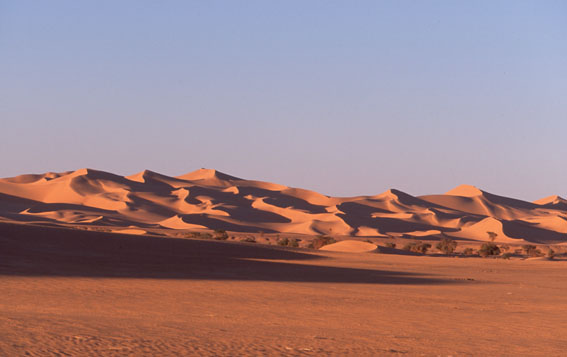 The sahara is the biggest desert of the world. This very arid region hides its water. Water appears for a short time, disappears, evaporates, builds an ephemeral small pond called “guelta” deep in a rocky valley. Sometimes, water seeps into the ground and refills the groundwater table.
The sahara is the biggest desert of the world. This very arid region hides its water. Water appears for a short time, disappears, evaporates, builds an ephemeral small pond called “guelta” deep in a rocky valley. Sometimes, water seeps into the ground and refills the groundwater table.
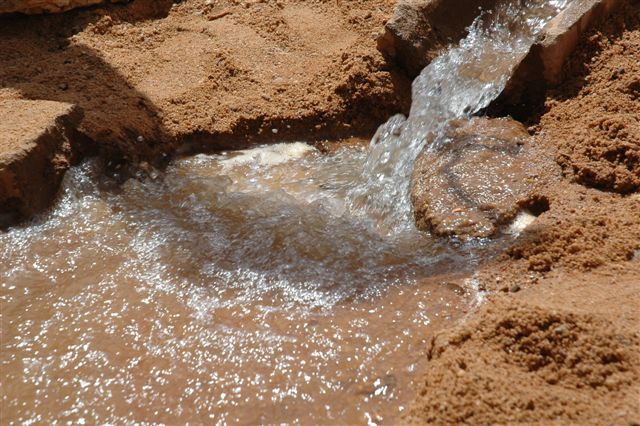 Indeed, during the short rainy season in July and August, surface water can’t be used since the amount of water is very little and changes every year, and also because the patches of thin or missing vegetation can’t retain water.
Indeed, during the short rainy season in July and August, surface water can’t be used since the amount of water is very little and changes every year, and also because the patches of thin or missing vegetation can’t retain water.
So water quickly infiltrate the soil. Desert inhabitants must walk to get it.Just like the acacia grows deeply its roots into the ground, these people learned how to drill into the ground to survive.
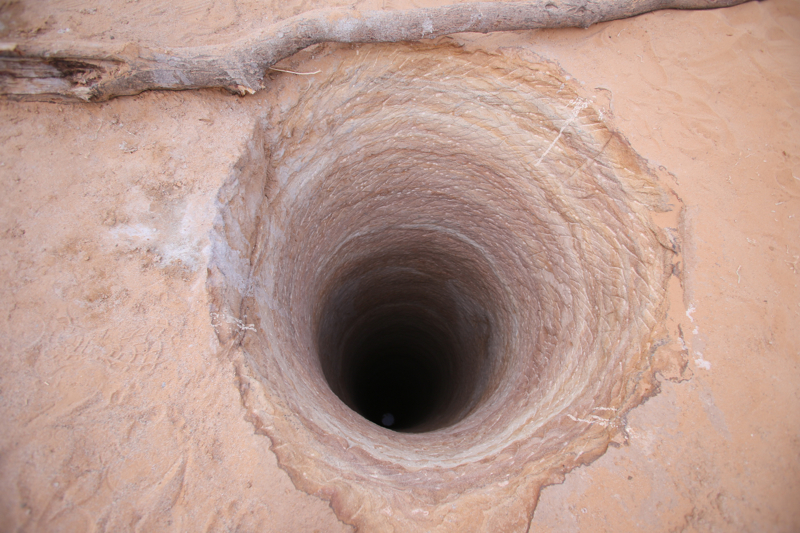
Today, the well becomes an important stop-over for caravans, an essential access, a shelter, a meeting and trading point, an oasis. They have drawn a new map of the desert, creating a new constellation. It’s a whole culture that was born around these water access points. For nomadic people, the well has become a life green island.
Nomads of Berber origin like Tuareg or Peul meet there. The camp is built for a few days or for a whole season, but always a bit to the side in order to leave a free access to water for everyone. So, the caravans go to the well, carry out the watering of their st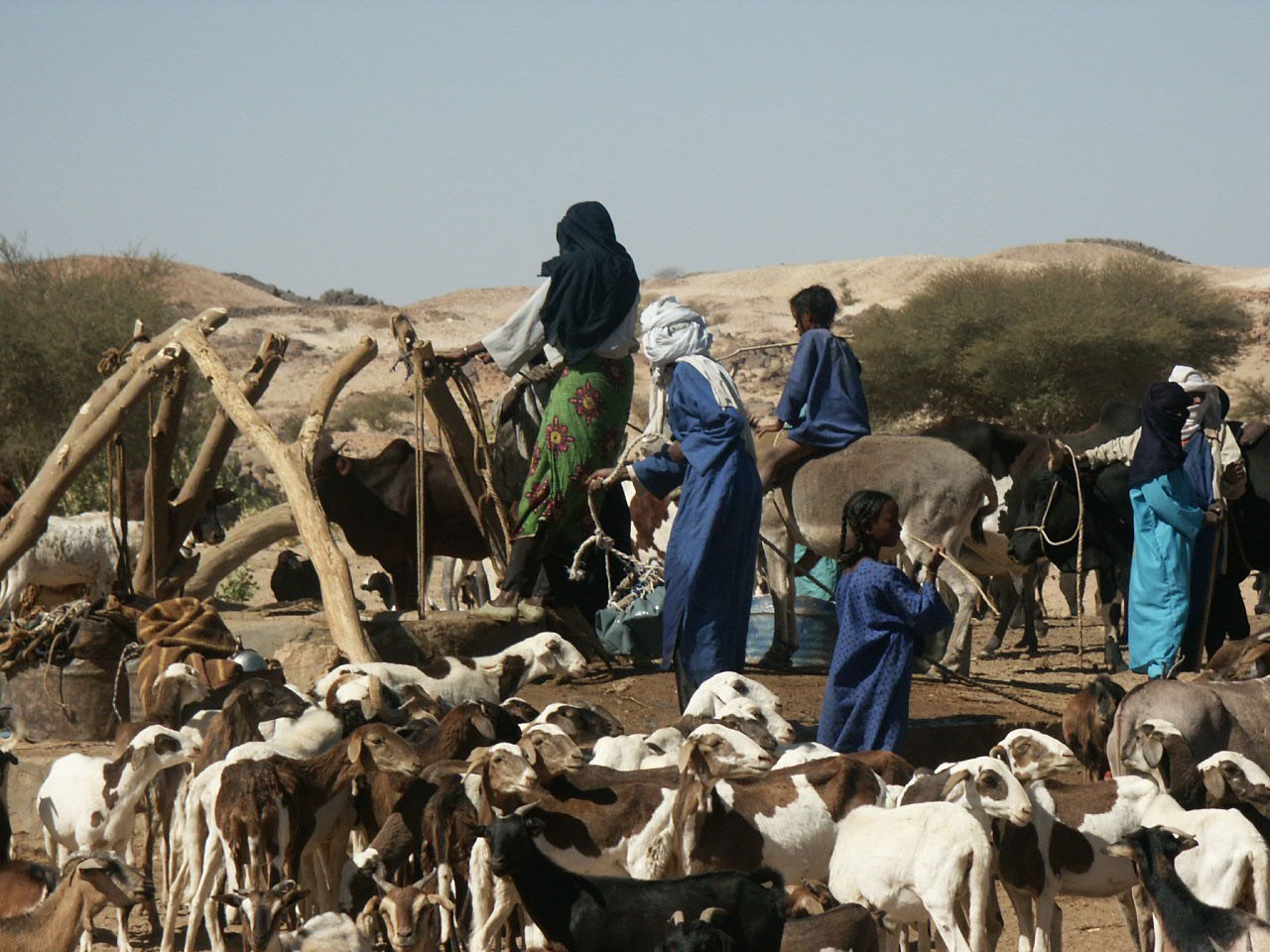 ock and continue on their way. Wells also become centers for settled people. Water is then drawn up from the well by using animal traction.
ock and continue on their way. Wells also become centers for settled people. Water is then drawn up from the well by using animal traction.
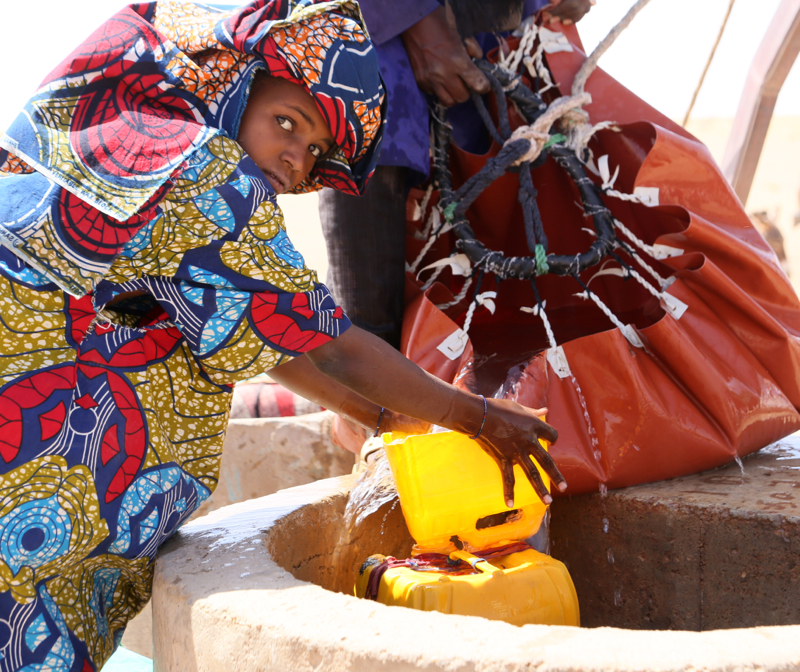
The well’s rope is pulled by a trained camel. An irrigation system enables several families to grow green vegetables, cereals, onions, palm trees, spices or oranges. The bucket plunges again and again. It holds around 10 gallons. It tips over and life appears. In some valleys, the multiplication of wells has enabled the creation of real oases where vegetables gardens support more and more people.
A woman appears, riding a donkey. She comes to fill the waterskin hanging on the side of the animal. Some children come with her. Behind the growling of the herds, we hear people laughing.
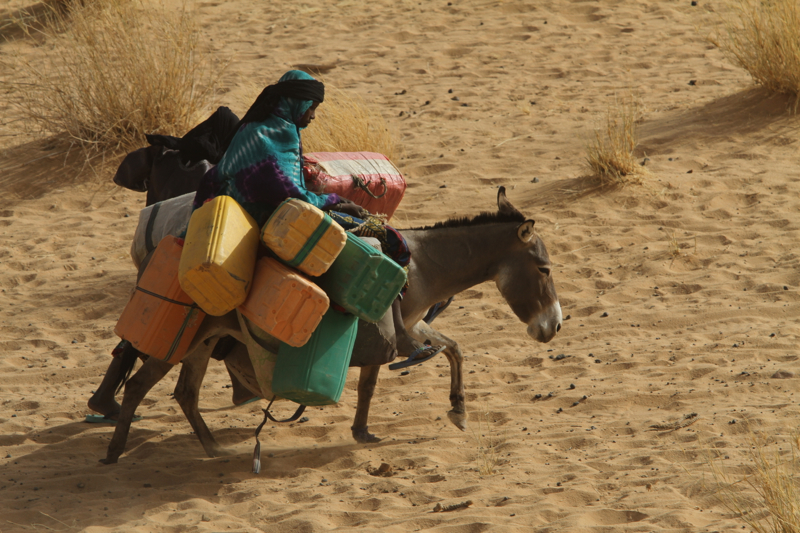
The pulley “takarkat” squeaks, whistles and makes its song resonate into the well. People are talking loudly, encourage each other pulling up the rope. The soil is damp and sticking to their feet. The animals gather around the drinking trough. An extraordinary sight is taking place around the well.
In early 2015, 217 wells were built. Each of them gives the Tuareg or settled people a tremendous boost.
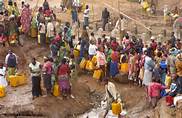
Would you like to dive in the daily life of Tuareg nomads? Watch the documentary film “Nomad’s Land”.
A day in the life of the nomadic Tuareg shepherds seeking for pastures south of Agadez, in Niger.
How can they survive with their livestock in this tough area ?





